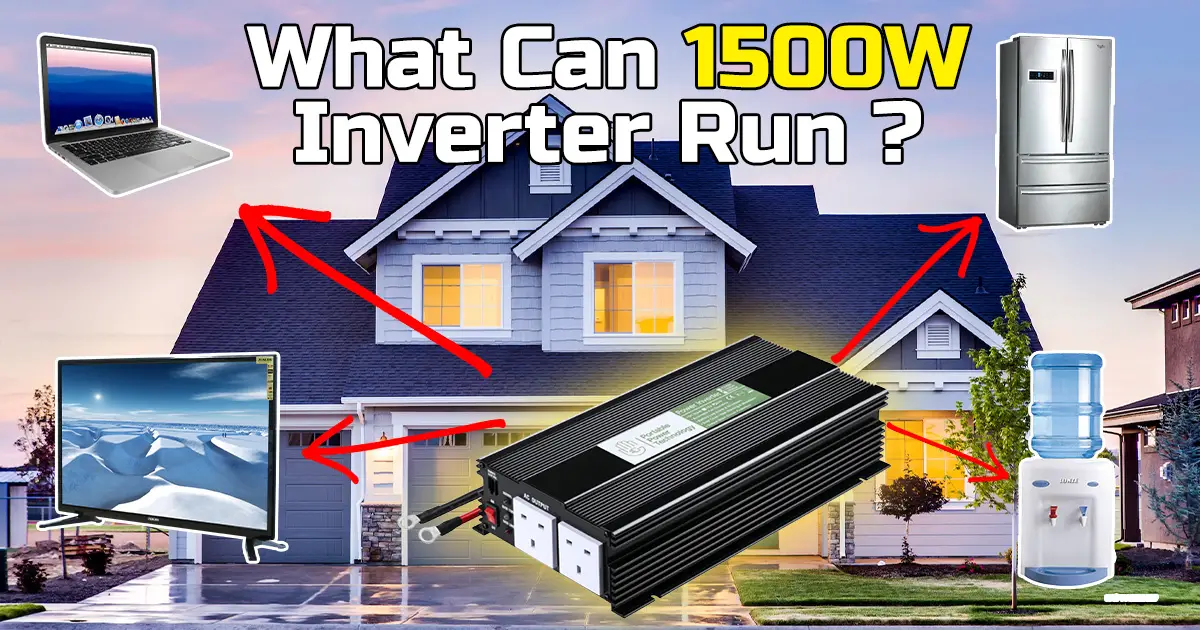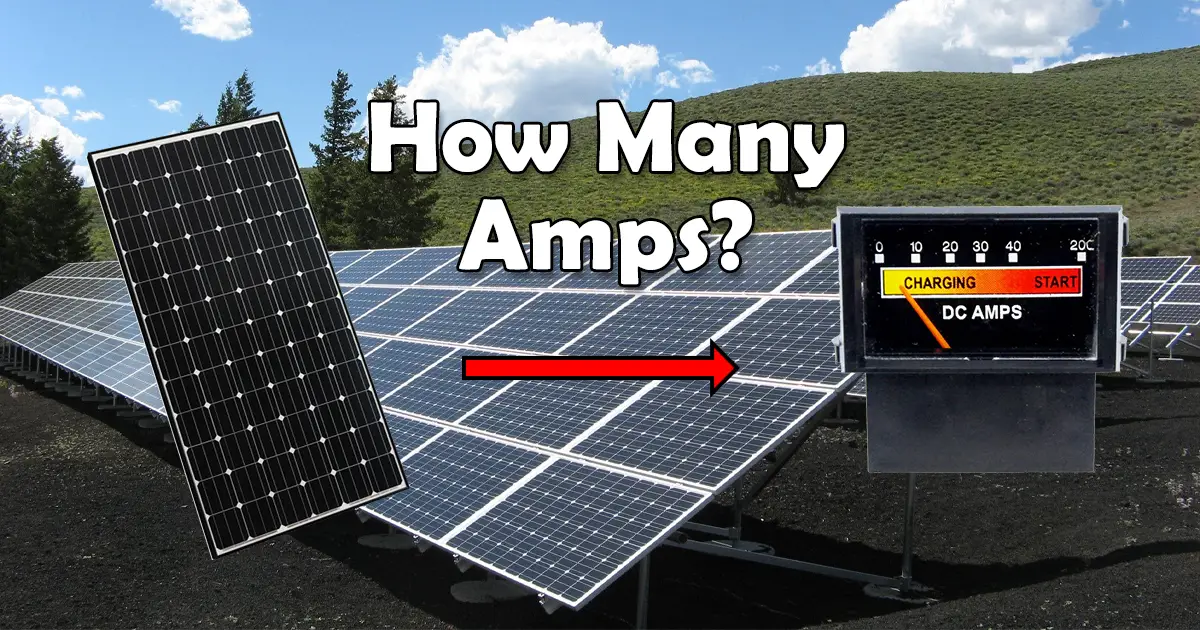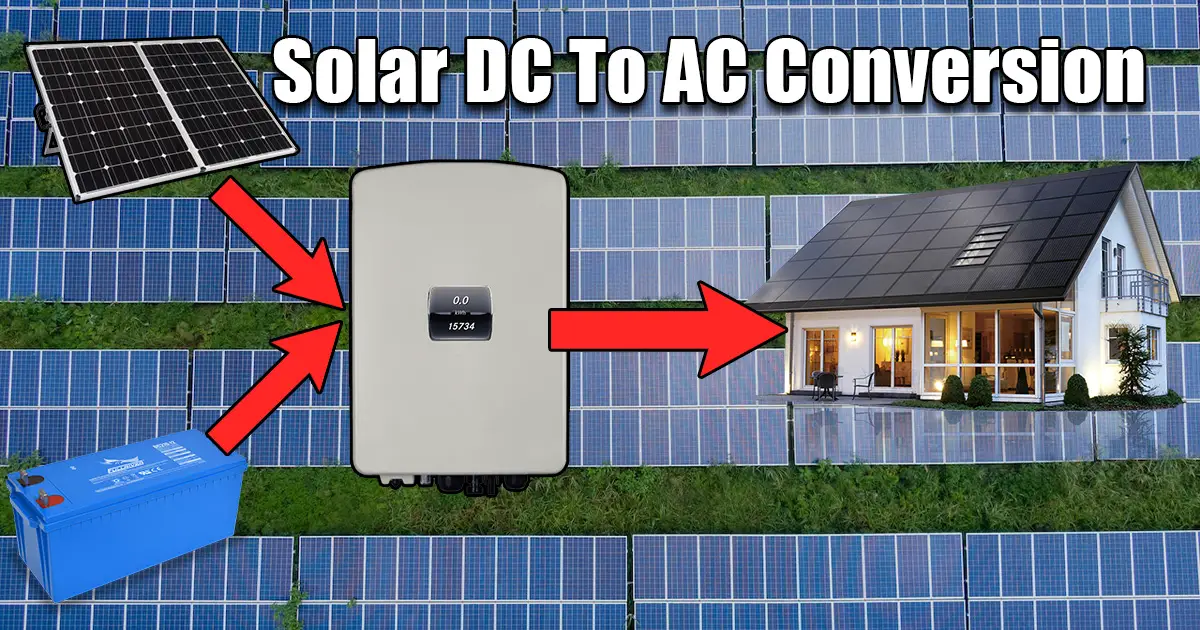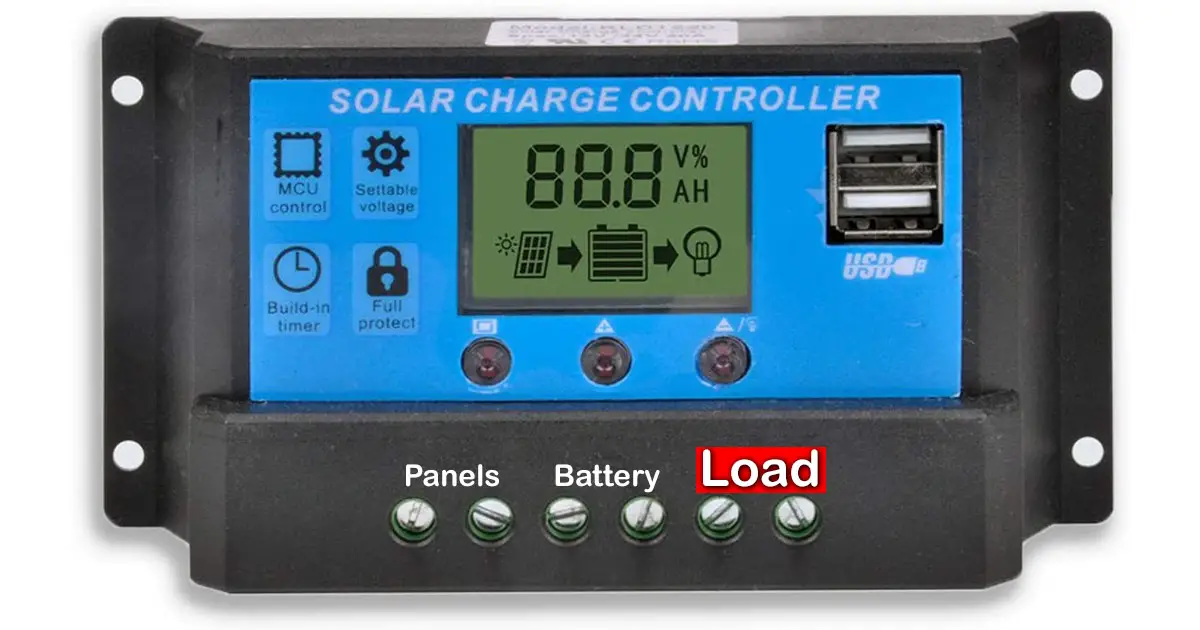An inverter is the core part of any solar power system. For this, you have to choose it wisely and determine if it will fulfill your requirements. As a general rule, power usage from the inverter should not be more than 80% of its maximum rated power. This means that our 1500 W inverter should not be loaded more than 1200 W (1500 x 80%).
So, what can we run on a 1500-watt inverter?
As a general rule, a 1500 W inverter could handle 1200 W of load. This load could be as a single 1200-watt electric stove. Or could be multiple appliances, like: five 10W lamps + one 500W fridge + one 300W 52″ TV + one 50W TV set box + one 100W fan + one 80W laptop + three 30W phone chargers + one 30W home security camera.
This is just the basics of calculating the load requirements, but there are still many things that you must consider while choosing the inverter and the load. Surge power is a very good example!
1500 Watt Inverter Surge Power
Surge power is a very important point to consider and especially while dealing with inductive loads, such as refrigerators, coolers, AC cooling units, etc…
These units usually have a very high power usage during their initial power consumption stage, known as surge power. This could sometimes reach double the rated power consumption and even more. For instance, a 500W refrigerator might need more than 1000W of power at the startup phase; however, this will usually be for a very short period of time, seconds, or even part of the second.
Appliances, in general, are more advanced nowadays, and they have less surge power than before. AC cooling units are a great example. Inverter AC units are more power-friendly than the old convenient compressor system. It needs much less surge power.
Each solar power inverter has specs that you need to take a look at. The rated power is the most common number that we always look at; however, there are many more that we should know. The surge power is written on the back of your inverter (go take a look)! For a 1500W inverter, the surge power will usually be between 2000W – 3000W. This means that your inverter will be able to handle up to 3000W of load for a short period of time, making it possible to run a refrigerator with 3000W surge power.
And speaking of inductive loads, such as refrigerators and AC units, you must be careful about the type of inverter you are going to use. Is it a square-wave inverter? A modified sine-wave inverter? Or a pure sine-wave inverter?
Inverter Wave Type
Now, as you know, we have two types of power in a solar-battery power system, AC and DC. The DC power (which is the power provided by the battery) is of low voltage compared to the AC power. It also has a straight-line voltage graph; take a look:
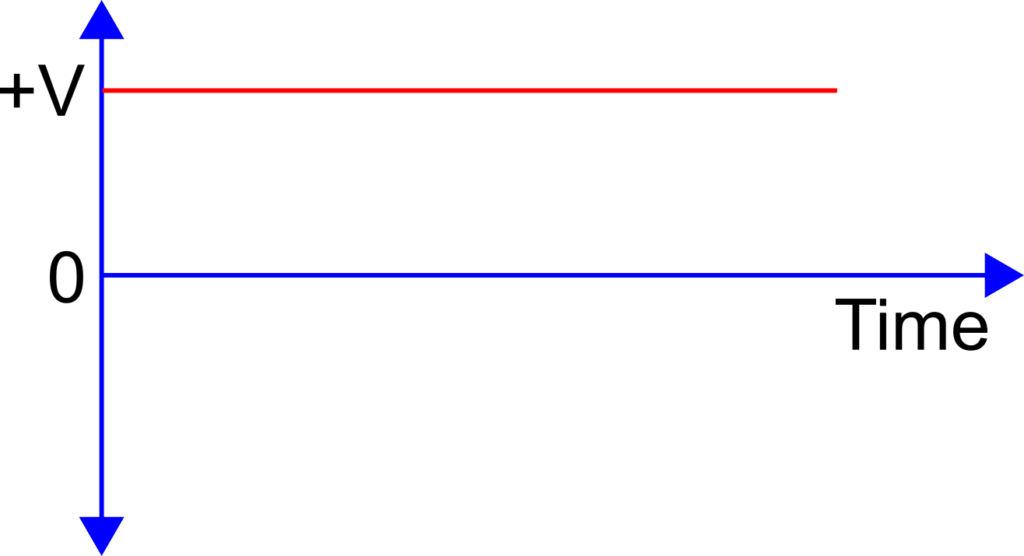
On the other hand, AC power is the power type that is used by our home appliances. It is of high voltage and has a sine-wave voltage graph that looks like that:
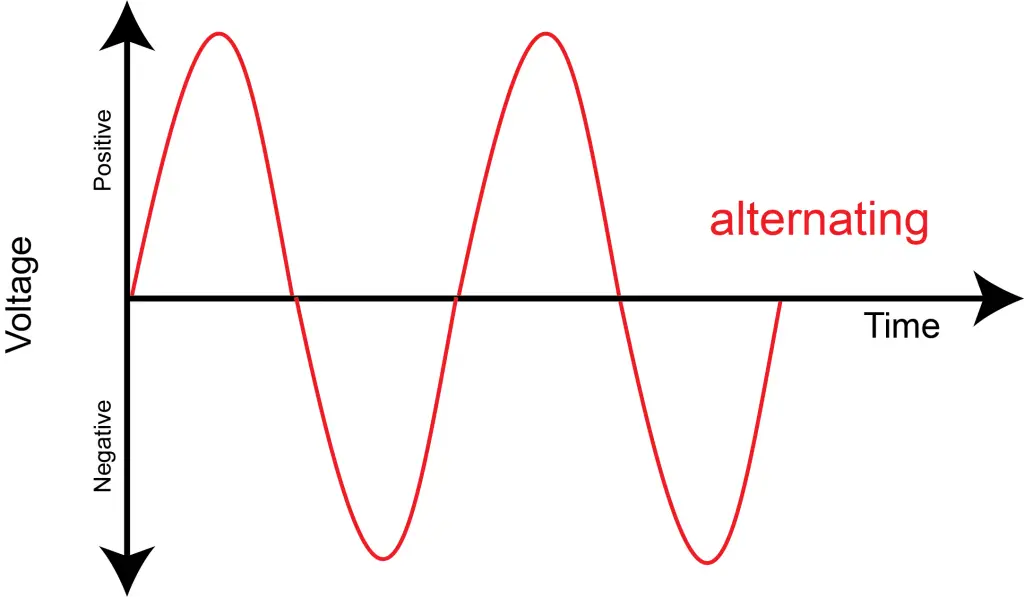
Your inverter’s job is to convert the power provided by the batteries (Straight-Line) to a power form that your appliances need (sine wave). However, not all inverters do this job.
Some inverters have a simple square wave power output, the same as the DC straight-line, that alternates sharply from negative to positive, with higher voltage, 220-240V for Europe and 120V for the US. And some have a modified square wave power output, which is a simple square wave that is wannabe a sine wave. And lastly, we have the pure sine wave inverter that is the same as the AC power provided by the grid.
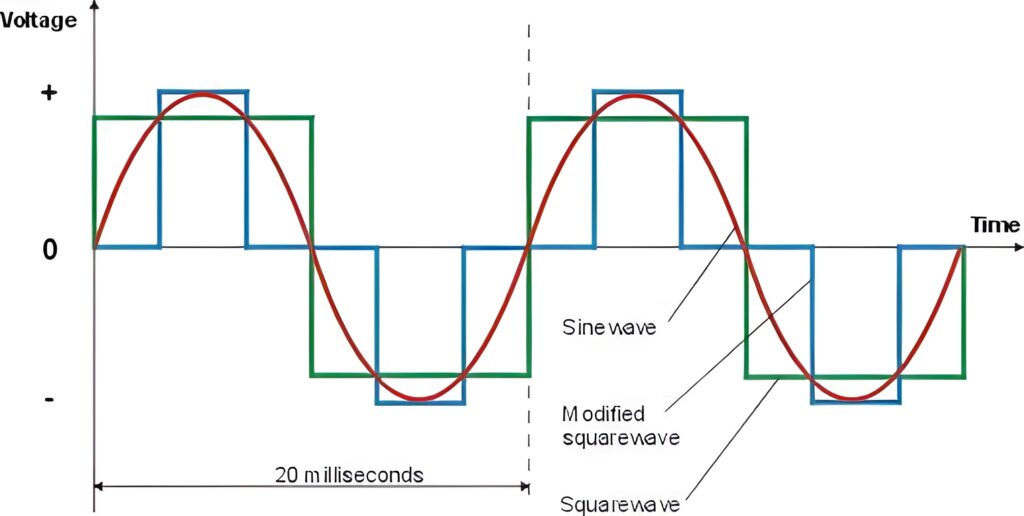
Usually, you will need a pure sine wave inverter to run all your house appliances safely and without interruption. However, a modified square wave might be used if you are not going to run a refrigerator, AC unit, or smart TV. On the other hand, a square wave inverter should be only used for lights and small fans.
Peak Hour Calculations
So now that you know how the 1500W inverter works and how much it should be loaded let’s do some calculations as an example. In my case, I will choose a 1500W pure sine wave inverter with 3000W surge power since I will be running a refrigerator and water cooler.
The first thing that you need to do is to calculate the total load at the peak hours. This is the time during the day when most of your appliances are working together. This might be during the day or the night. In my case, this will be around 3:00 PM. I will be running the following appliances:
| Appliance Name | Appliance Wattage |
|---|---|
| Refrigerator | 800W (surge power: 1600W) |
| 55″ LED TV | 100W |
| Water Cooler | 100W |
| Laptop | 60W |
| 2 Phone Chargers | 30W x 2 = 60W |
| Total: | 1120W |
Now by looking at the total needed power at the peak hour, you will notice that I will need 1120W of power, and my 1500W inverter must not be fully loaded. Loading your inverter fully might lead to destroying it or electric failure. For this, we will be loading 80% of its total rated power (1500W x 0.8 = 1200W).
This means that my inverter will be able to run safely during the peak hour and run the total load without any problem (1120W < 1200W). But what about the surge power of the refrigerator? Let’s consider the worst scenario: All the other loads were running except the refrigerator, and then I powered it.
Total Power with Surge = Total Running Load + Surge Power
Total Power with Surge = TV Load + Water Cooler Load + Laptop Load + 2 Chargers Load + Refrigerator Surge Power Load
Total Power with Surge = 100W + 100W + 60W + 60W + 1600W
Total Power with Surge = 1920W
So in the worst case, I will still be on the safe side since my inverter is capable of handling up to 3000W of surge power (1920W < 3000W).
Final Words
Making sure that you are using your 1500W inverter efficiently for its life span and protect it from overload. This process will also let you know exactly which appliances you could use together and safely.
Knowing your load’s requirements is the most important part of this process. You should first look for any specs badges on your devices. Next, you could go back to the instruction manual that came with it (if you still have it). Lastly, if you cannot find your device specs, you should search for its name and model number on google; hopefully, you can find something.

